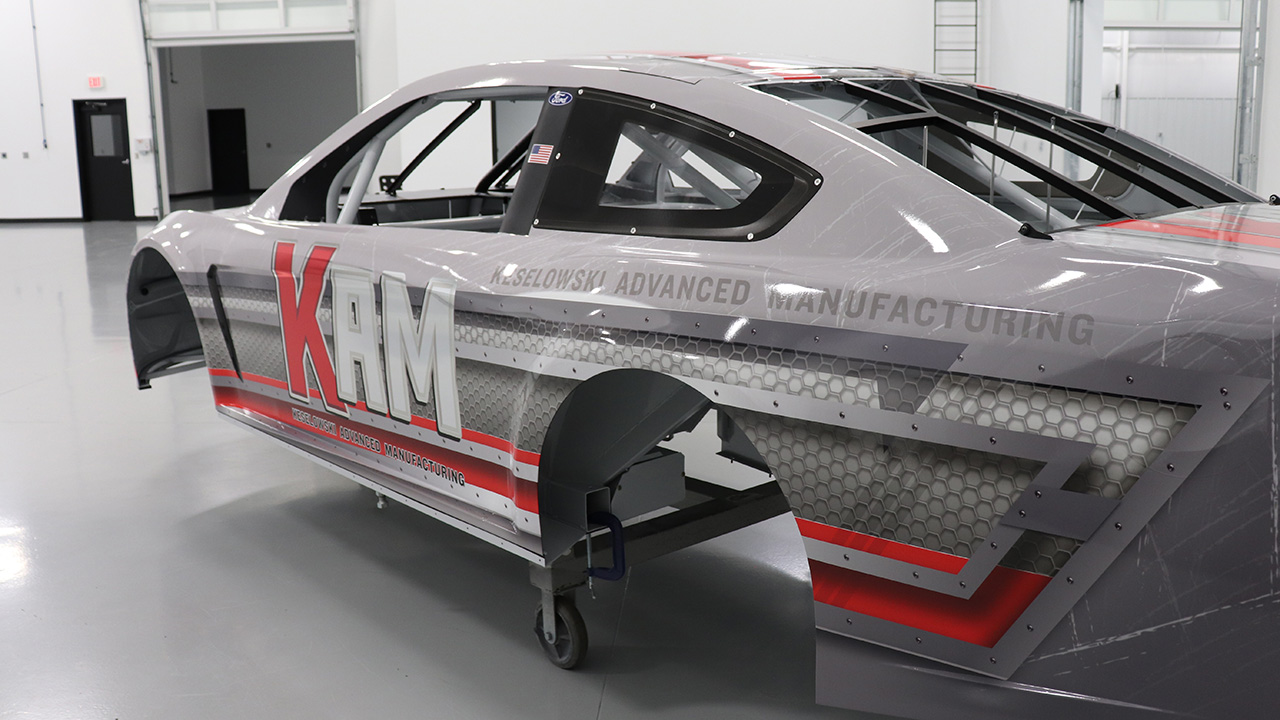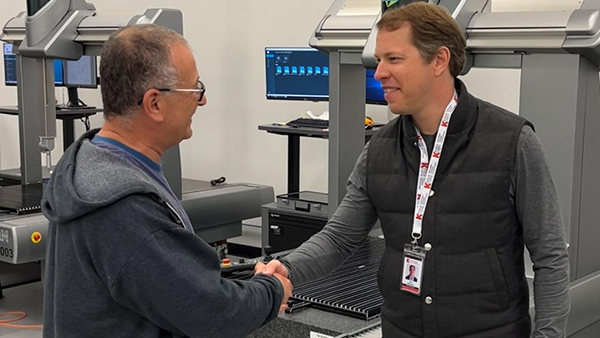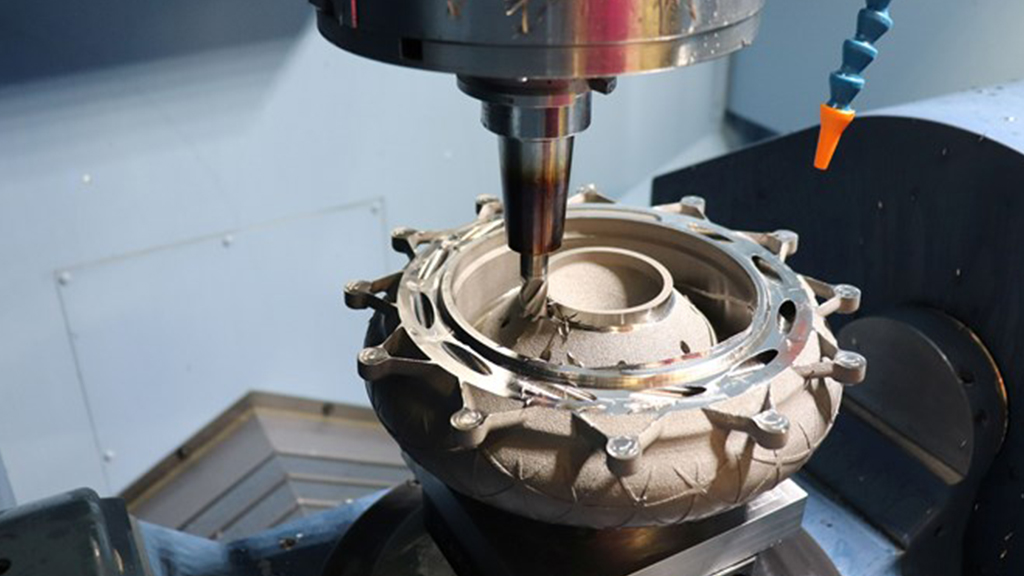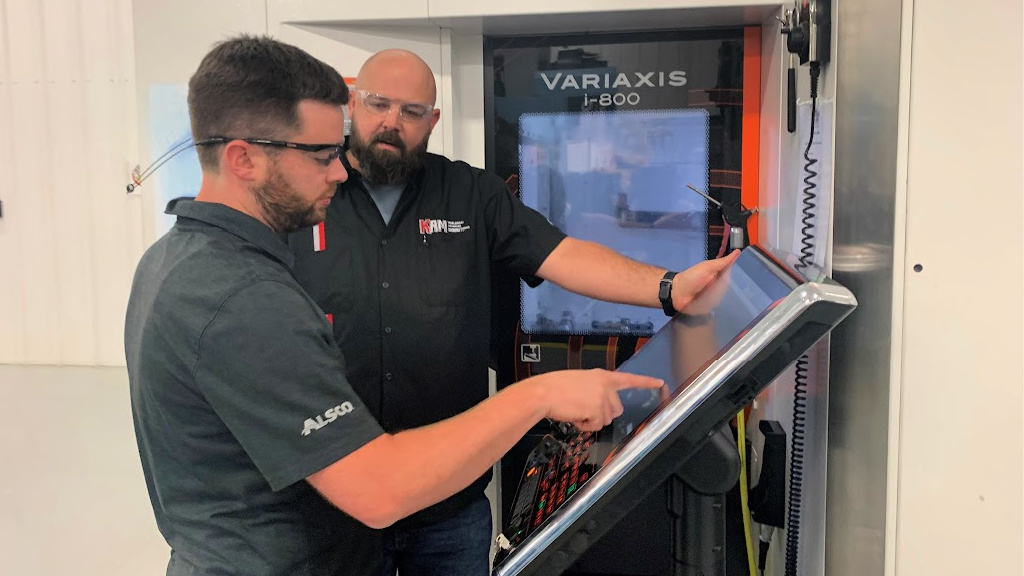With “eight figures with a long way to go” of his personal wealth invested into Keselowski Advanced Manufacturing (KAM), NASCAR driver Brad Keselowski is making a huge bet on additive manufacturing (AM). The Statesville, North Carolina, shop has two massive General Electric (GE) metal additive manufacturing (AM) machines, four Mazak CNC machining centers, a GF Machining Solutions wire EDM machine, Pinnacle X-Ray Solutions computer tomography (CT) scanning equipment, a coordinate measuring machine (CMM), a Nikon 3D scanner, and advanced software systems link the machines together.
“We’re all in with this. You have to jump into this sort of thing with confidence,” Keselowski says. “It’s part of the racing culture. You don’t find too many drivers who aren’t risk takers. If you’re not willing to take blind leaps, you’re not going to win.”
Racing Spirit
Racing will still be Keselowksi’s day job, but KAM is his future, he says. It’s where he hopes to greatly impact racing technology, commercial vehicle manufacturing, military contract jobs, aerospace work, and manufacturing for any industry that can benefit from AM technologies and Industrial Internet of Things (IIoT)/Industry 4.0 data-driven process technologies.
The immediate opportunities, situated in NASCAR country an hour north of Charlotte, will be custom parts for race teams. Drivers and teams often talk about the race before the race – the design and build time when crew chiefs swap out vehicle components in hopes of gaining a technical edge in the next week’s race. It’s a pressure-driven environment in which crews have to produce flawless parts (that will be subjected to harsh racing environments) with minimal turnaround times. Keselowski says it’s an environment where AM technologies are already showing their value.
In 2000, he remembers seeing his first 3D-printed racecar part, an air intake for a stock car. He immediately wanted to put it on a car and race with it before being told that the plastic piece would melt on the track. Keselowski says he’s been waiting for the technology to mature and move into metals ever since.
With GE’s Concept Laser metal AM machines, the equipment is ready, he says, and his engineering team is ready to make parts for various industries.
“Race teams are really engineering teams that occasionally get to race. I’ve seen the successes that we’ve had and watched other teams, and I’ve seen that the teams with the best engineers always seem to have the fastest cars,” Keselowski says. “That’s the spirit we’re going to take to other industries – that fast turnaround time, that part you can depend on the first time it’s made.”
Key to the shop’s strategy is attracting other industries to hybrid manufacturing’s potential – 3D printing some parts, machining others, starting some on printers and finishing them on machines – picking the right technology for the part.
“If this only serves motor sports, it will be a tremendous failure as a business,” Keselowski says. “This business has the potential to be bigger than anything I’ve done in racing.”
Building Confidence
Spending more on equipment at launch than most 30-person shops will spend in a decade is critical to showing potential customers that KAM is a serious operation, not a vanity project for a professional athlete, says General Manager Steve Fetch.
“Metal AM is getting to that point where you can go from prototyping to volume production, but a lot of customers need to be convinced that it’s capable and that we’re capable of producing with it,” Fetch says. “Coming from racing, we know speed, and that’s our initial pitch. If you can eliminate tooling for new parts, speed becomes a big advantage in time to market.”
A lot of companies that want to outsource parts to shops such as KAM are excited about the potential for hybrid manufacturing technologies, Fetch says, so advocates for new ways of doing things and new production partners already exist. To take advantage of that, KAM had to support those people who enable and endorse new technologies.
So, proving quality is critical, he says. KAM engineers must show a customer that the shop can produce a usable metal part, built to stringent quality specifications. Customers can’t afford to take Fetch’s word that everything will work.
That realization led to one of the shop’s largest investments – the Pinnacle X-Ray solutions CT scanner. The machine stacks 2D X-ray images on top of each other to generate 3D images of parts – showing the internal cavities that often define 3D-printed components.
Pinnacle Managing Director and CEO Rod Meyer says aerospace companies have led metal AM use, and they’re his biggest customer base for CT systems.
“With AM, most of the problems are internal, so they’re not going to show up on a CMM or a 3D scan. You need to see inside the workpiece,” Meyer says. “We can detect porosity, unintended fusions, areas where the (metal) powders didn’t melt properly, and dimensional flaws.”
Fetch says with CT reports showing interior dimensions, coupled with CMM and 3D-scan data for part exteriors, KAM demonstrates part quality without time consuming, expensive destructive testing. The company also uses Mazak’s Smartbox IIoT systems to record every action machines take, generating process reports that KAM engineers can also share with customers.
“Everybody knows that additive is in the manufacturing world, but most people don’t really understand the challenges,” Fetch says. “They understand the concept, but they don’t know the five or six things you have to do after printing to get a finished part. Expectations are either too high or too low, so we have to do a lot of explaining.”
Getting Ready
KAM is pursuing ISO standards for manufacturing quality and aerospace productivity. Keselowski says the company is also undergoing International Traffic in Arms Regulations (ITAR) certification to work on military contracts.
With North Carolina’s racing industry, heavy truck manufacturing, aerospace sectors, and military contractors close by, he expects the shop to be busy as soon as the ink dries on its various certificates.
Keselowski says he plans to keep racing, so he won’t run day-to-day operations at his shop. He’ll visit frequently and provide strategic vision, but Fetch and his team will be in charge.
“I’ll still be racing for a long time. A lot of drivers compete into their late 40s, so I have at least another 10 years in me,” Keselowski says. “I need a job to pay for all of this, especially for the next few years.”








